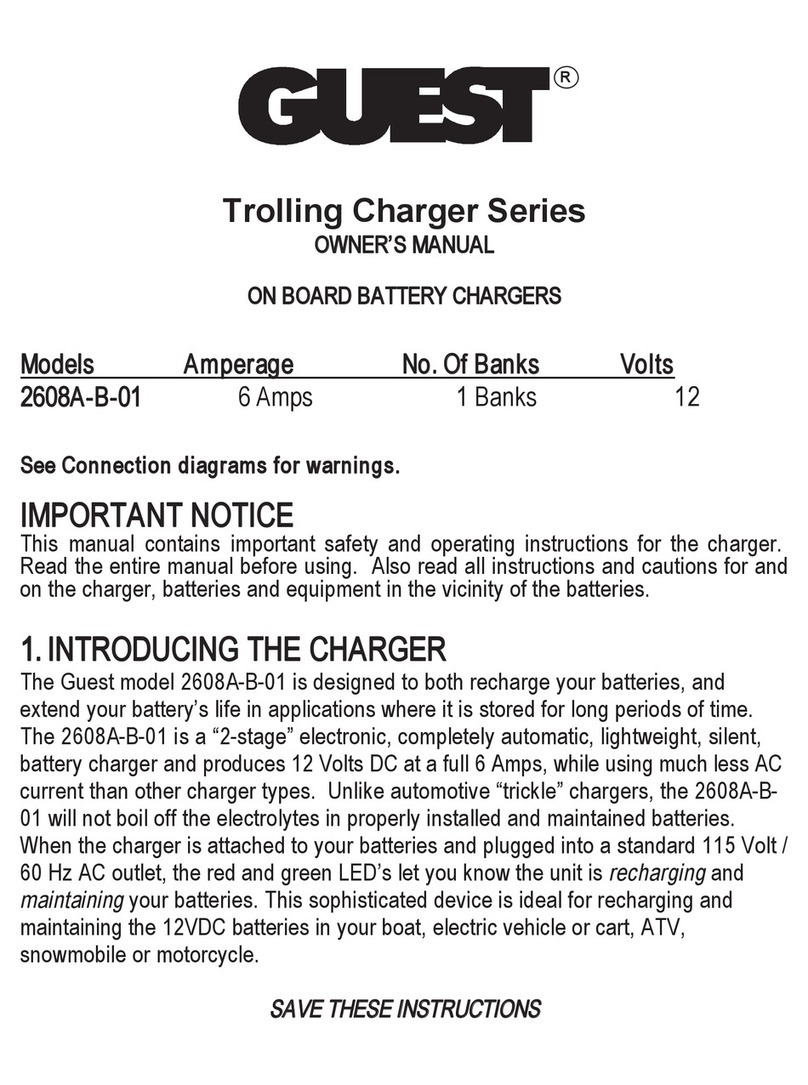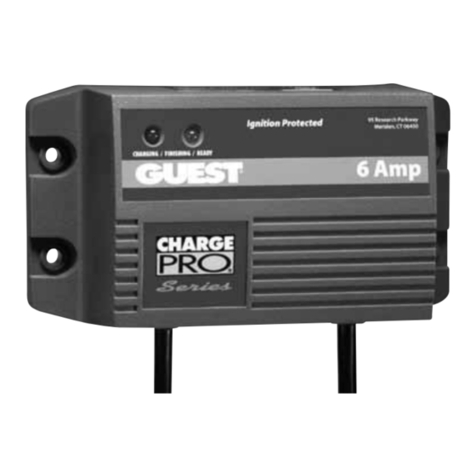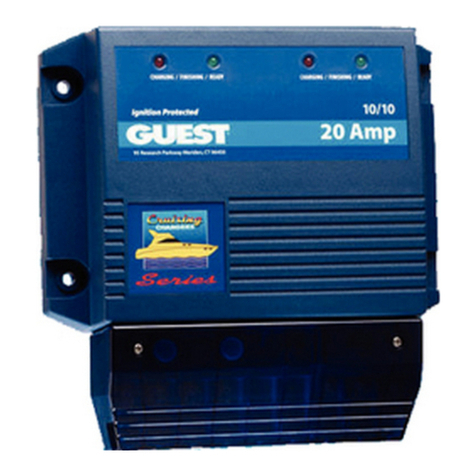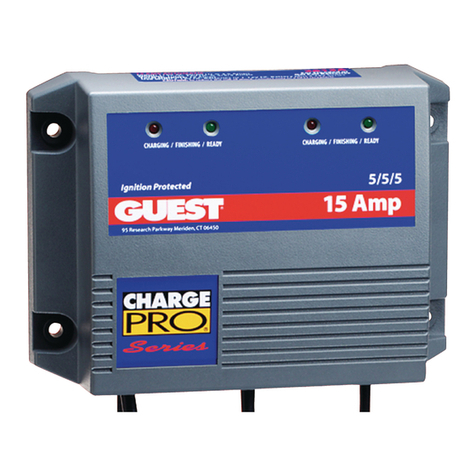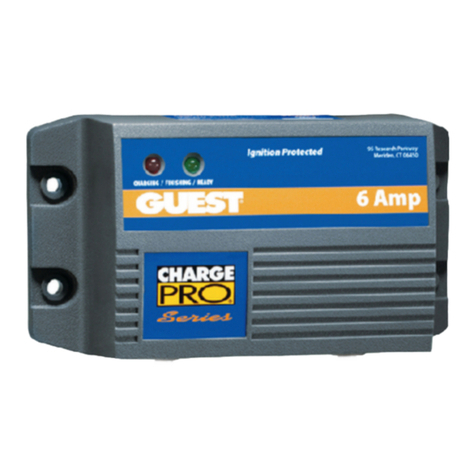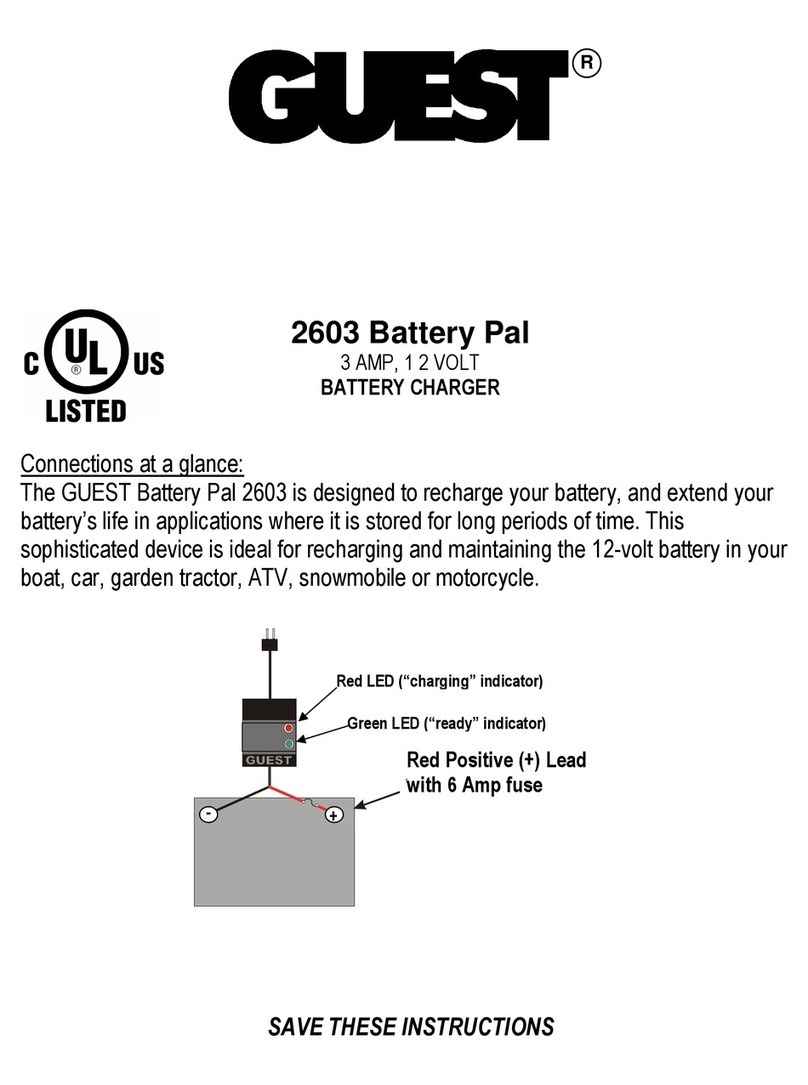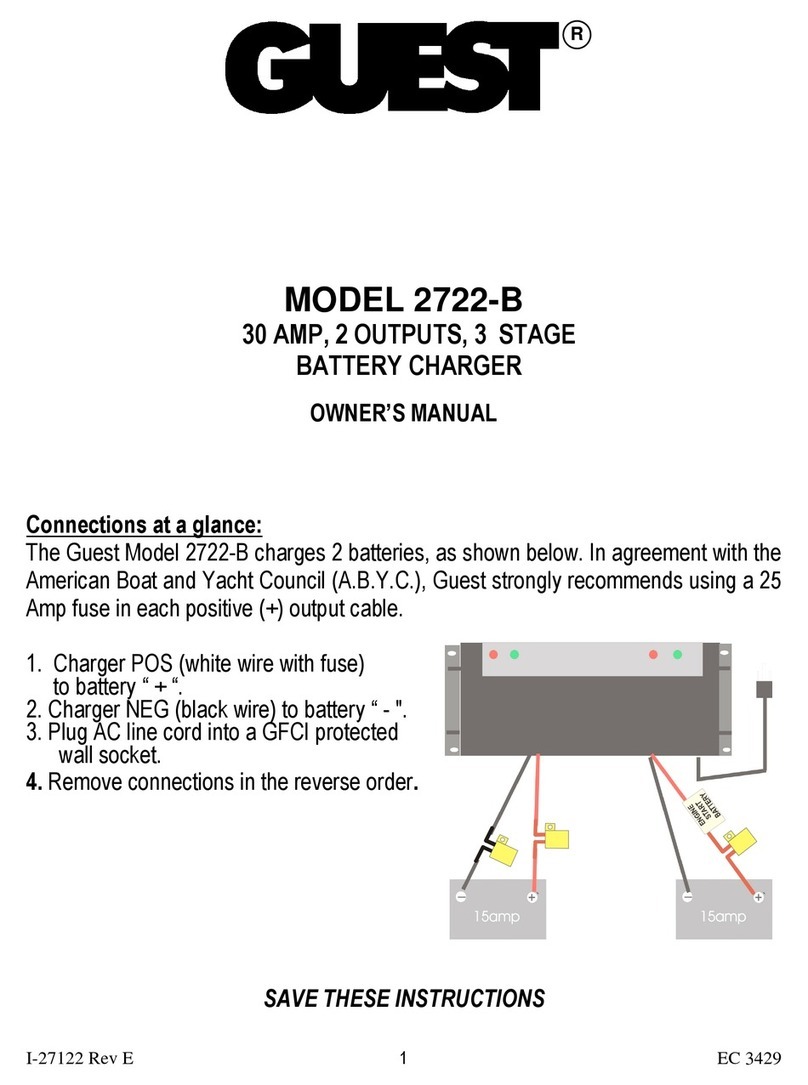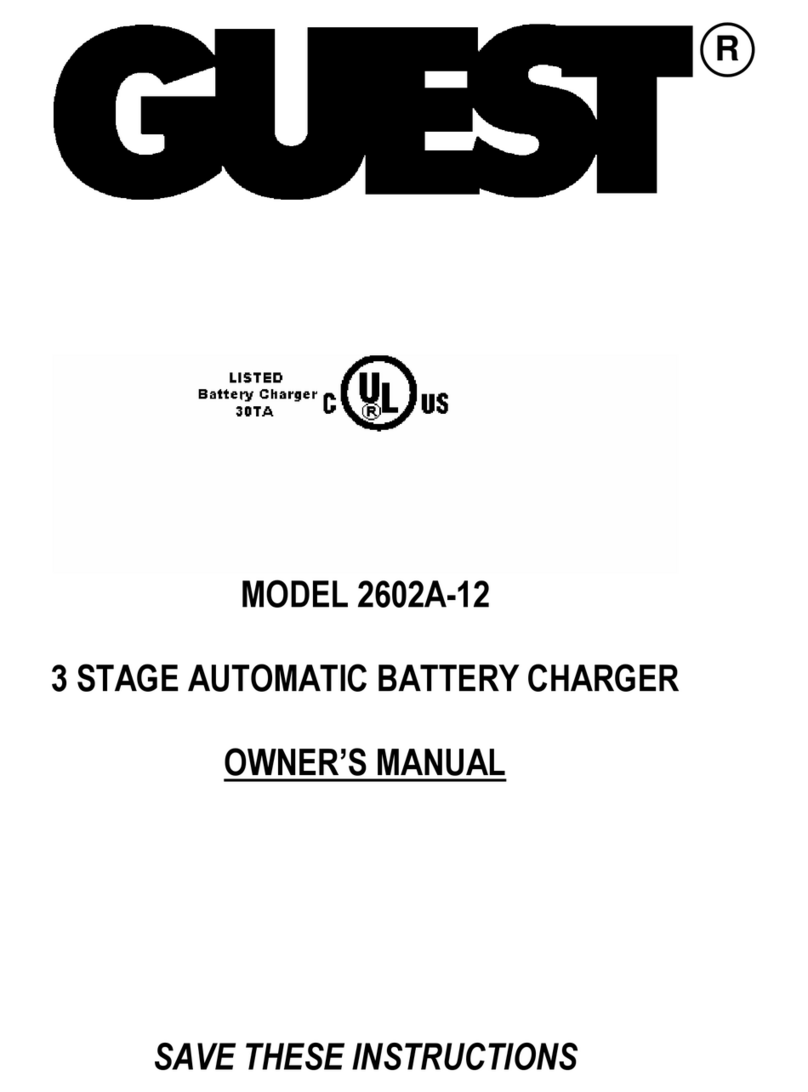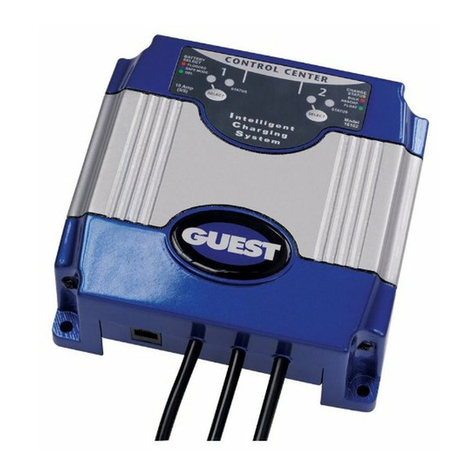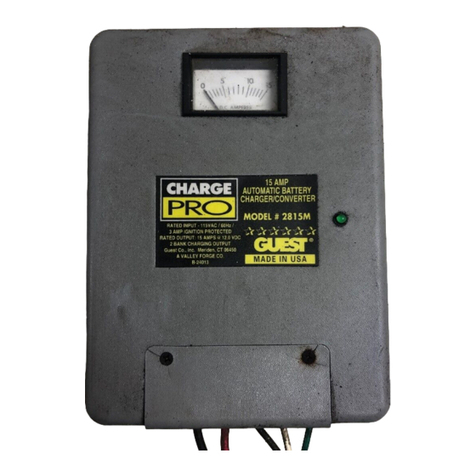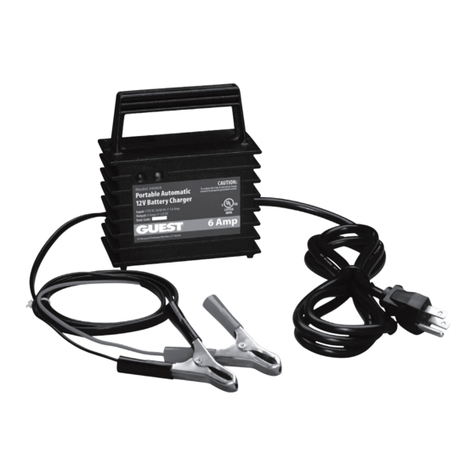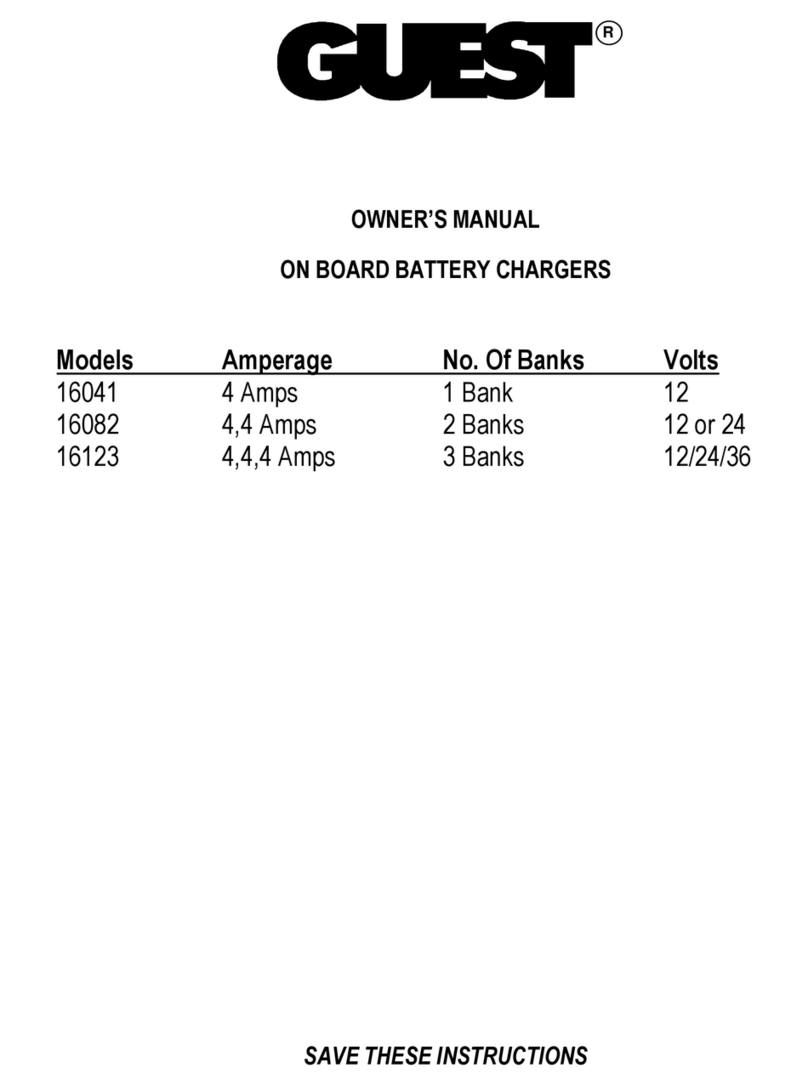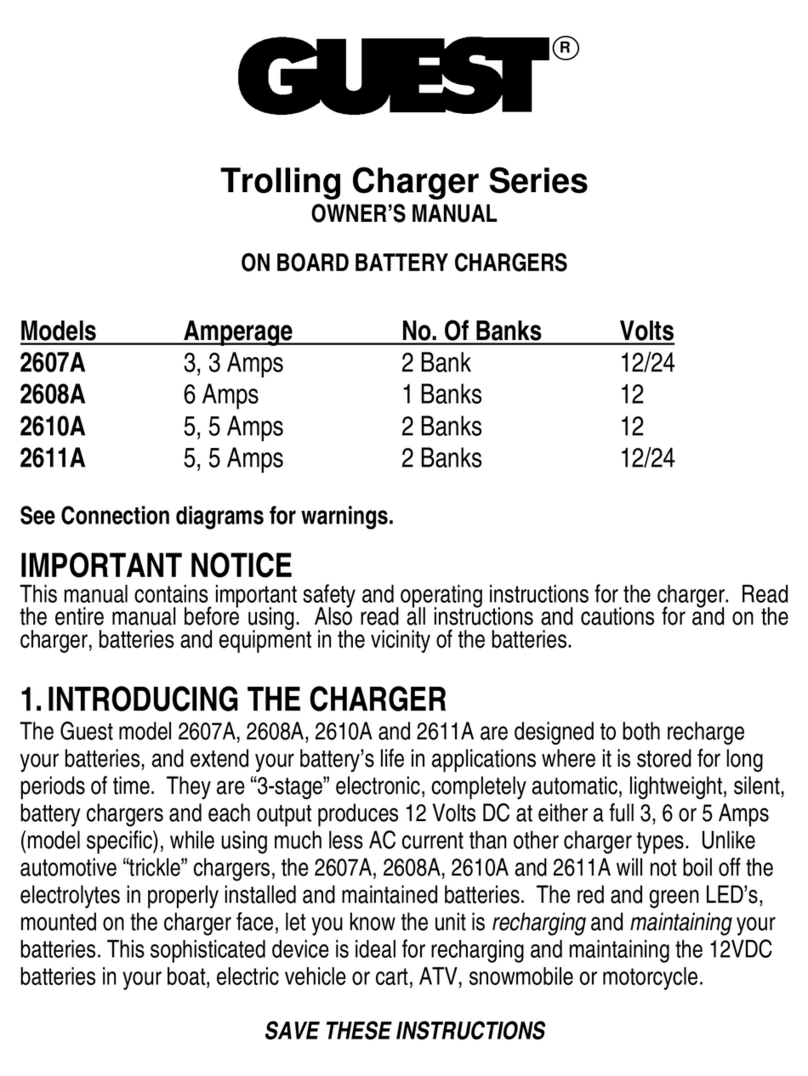
2
1. INTRODUCING THE CHARGER
The GUEST ChargePro 2610 is designed to both recharge your batteries, and extend your
battery’s life in applications where it is stored for long periods of time. The 2610 is a “3-stage”
electronic battery charger with two independent outputs. Rainproof, lightweight, silent, and
completely automatic, it produces 12 Volts DC at a full 10 Amps, while using much less AC
current than older chargers. Unlike automotive “trickle” chargers, the 2610 will not boil off the
electrolytes in lead-acid batteries when left unattended. hen the 2610 is attached to your
batteries and plugged into a standard 115 Volt / 60 Hz AC outlet, the red and green LED’s let you
know the unit is recharging and maintaining your batteries.
2. IMPORTANT SAFET INSTRUCTIONS
This manual contains important safety and operating instructions for the charger. Read the entire
manual before using. Also read all instructions and cautions for and on the charger, batteries and
equipment in the vicinity of the batteries.
WARNINGS
THIS CHARGER SHOULD BE USED TO CHARGE SINGLE OR DUAL 12 VOLT DC LEAD
ACID OR GELL T PE BATTERIES. USE ON OTHER THAN A 12 VDC S STEM CAN CAUSE
THE BATTERIES TO EXPLODE AND CAUSE PERSONAL INJUR .
RISK OF EXPLOSIVE GASES! WORKING IN THE VICINIT OF LEAD ACID BATTERIES IS
DANGEROUS. BATTERIES GENERATE EXPLOSIVE GASES DURING NORMAL
OPERATION. THEREFORE IT IS OF UTMOST IMPORTANCE THAT EACH TIME BEFORE
USING OUR CHARGER OU FOLLOW THE INSTRUCTIONS EXACTL .
Personal Safety Precautions
Adhere to the following personal safety precautions when installing or working with the chargers:
1. Someone should be within voice range or close enough to come to your aid when you work
near a lead-acid battery.
2. Have plenty of fresh water and soap nearby in case battery acid contacts skin, clothing, or
eyes.
3. ear complete eye protection and clothing protection. Avoid touching eyes while working
near a battery.
4. If battery acid contacts skin or clothing, wash them immediately with soap and water. If acid
enters the eye, flood the eye with cold, running water for at least ten minutes and get medical
attention.
5. Never smoke or allow an open flame in the vicinity of the battery.
6. Do not drop a metal tool onto the battery. It may spark, short circuit the battery and may
cause an explosion.
7. Remove all personal metal items such as rings, bracelets, necklaces, and watches when
working near a lead-acid battery. A battery can produce short circuit currents high enough to
weld a ring or the like to metal, causing a severe burn.

